
Soon it will be harvest time here and one of the things I like to preserve are grape leaves; harvested before they turn color in autumn and fall from the vine.
The leaves picked in spring are more tender, but since my grape vines are young I prefer the leaves stay with the vine during the growing season. As the vines become more prolific I'll switch to harvesting the leaves in the spring.
My favorite way of serving the preserved leaves is to use them as an edible wrapper for stuffing, for such things as Dolmas/Dolmades:
 Photo credit: igourmet.com (Click image to learn more.)
Photo credit: igourmet.com (Click image to learn more.)
 Photo credit: igourmet.com (Click image to learn more.)
Photo credit: igourmet.com (Click image to learn more.)Dolmas are stuffed grape leaves; a traditional component of a Greek mezé ~ or appetizer assortment, I serve them as a side dish or snack as well.
They can be stuffed with a number of things; rice or bulgur (cracked wheat), onion, pine nuts, currants, seasonings such as dill or mint, a touch of cinnamon, salt, pepper, and lemon juice. Yum!
For the leaves, you can cook and can the freshly plucked leaves so they are shelf stable, or do it the way I prefer. Simply soak them in a '3-ingredient' lacto-fermentation brine, pack them in a jar and allow them to ferment for a day or three on the kitchen counter then refrigerate until ready to use as you wish.

I like to pick the leaves (organically grown only) in the cool of the early morning, submerge in cool water to freshen, then wash in fresh cool water and drain.

The ingredients for the lacto-fermentation brine are:
about 2 cups filtered water
And, of course, you'll need some fresh, tender grape leaves (organically grown)
This time I picked 32 leaves--but the amount is up to you, just increase the amount of brine if you use more leaves.
Note: If you don't happen to have whey on hand, add an additional tablespoon of salt.

Mix up the brine ingredients, making sure salt is dissolved. Place the leaves in a non-metallic vessel (good quality enamel lined, or glass), and pour the brine over the leaves.
Allow to marinate at room temperature for about an hour ~
Then stack the leaves neatly one upon another and roll the lot from the stem end to the tip (see note below) and place them in an impeccably clean quart size canning jar.
Pour the marinating brine over, adding additional filtered water in order to cover leaves if necessary. Allow about a 1-inch headspace between leaves/brine and jar lid.

Instead of one BIG roll of leaves, I prefer to make stacks of 8 to 12 leaves and roll each so I have smaller rolls, then pack them into jar(s) and pour the brine over.

Then allow to sit at room temperature (out of sunlight) for 24 to 74 hours, at which point fermentation will have begun to develop, then refrigerate for longer storage.
Over time the leaves will darken and become more pliable which is exactly what you're aiming for. When I make the dolmas/dolmades I will post about them, so please stay tuned!
In the meantime, if you'd like a recipe for Dolmas you can click the tab below to visit
Foodista:
Thanks so much for stopping by today, friends.











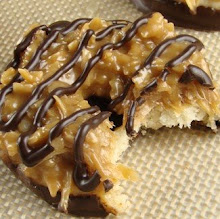
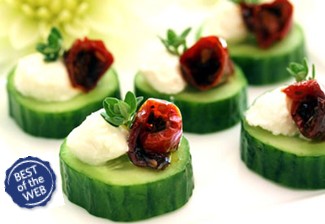







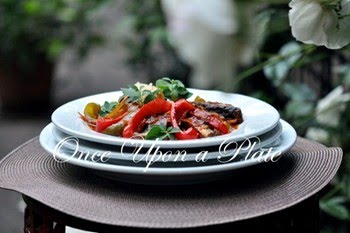

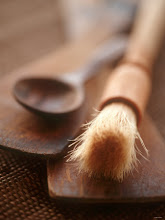

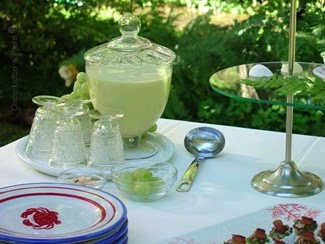



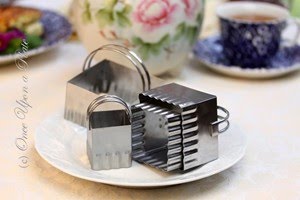

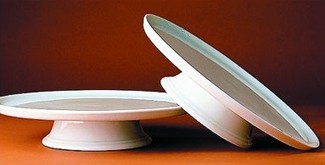
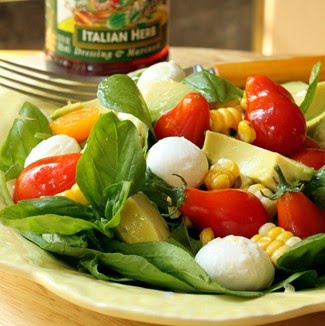



These are my husband's favourite Mediterranean snacks. Lovely pictures you've got here :)!
ReplyDeleteWe always have these when we go to our favorite Greek restaurant! The leaves are SO tender!
ReplyDeletexoxo
Jane
We haven't made these in years. I need to remind "the chef" to put these back on his list. :-)
ReplyDeleteI always learn something from you Mary.
ReplyDeleteI'm staying tuned.
Ann
I've had the stuffed version, but I guess I never thought about how the leaves get to that stage. This was really interesting. Thanks!
ReplyDeleteI just loved this! Now I have never eaten a grape leaf. This sounds fun to do. Can you use muscandine leaves? My grape leafs are not doing so well. This would be a fun thing to try. I can see I am missing out! Looks wonderful!
ReplyDeleteMary, I've put up grape leaves before, but have never used this method with whey. Very interesting and I will see if I can get some to try it out. We have gazillions of wild grapevines at the farm, as well as the domestic grapes I've planted. I've only ever put up the wild ones.
ReplyDeleteThanks for sharing this info!
The pictures of these beautiful leaves makes me want to do this!!!! But things like this... a little out of MY ordinary really gets me interested! Your tutorial is so easy to understand and the images breathtaking! I have love learning about preserving grape leaves. Thanks!
ReplyDeleteYvonne
Dolmades are an absolute must around here. I found an organic vineyard that is willing to give me all the leaves I want...yay me:D
ReplyDeleteSuch beautiful pictures of the bright green leaves!
ReplyDeleteHi Mary! as usual your post is very informative. And I love the photos you post here as well. If you wont mind I'd love to guide Foodista readers to your post. Just add the foodista widget to the end of this post so it will appear in the Foodista pages and it's all set, Thanks!
ReplyDeleteThis is so interesting. I have been wanting to try lacto fermenting for a while now.
ReplyDeleteHello Again Mary! The foodista widget looks good. I forgot to mention that you can also place other foodista widget in your past and future blogs so that other foodista readers can them. See you there!
ReplyDeleteI made did some grape leaves using a similar method last summer and they are fantastic. I've linked your recipe to my post on fermentation so others can try it!
ReplyDeletehttp://backyardfarmsto.blogspot.com/2011/01/probiotics-part-2-fermentation.html